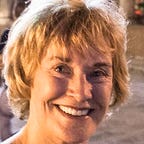Alice Neel “People Come First” Exclusive Opening at the de Young Museum
by Lee Daley
“For me, people come first. I have tried to assert the dignity and eternal importance of the human being.” — Alice Neel
Throughout the People Come First exhibition at San Francisco’s de Young Museum, Alice Neel’s paintings reflect both her radical personal ideology and her quest to capture the dignity and importance of her subjects. Neel (1900–1984) spent most of her adult life in New York City where, beginning in the 1930s, she lived through the rise of communism, the ensuing Great Depression and the eventual civil rights and feminist movements. Deeply immersed in the society around her, she described her artistry as a form of history painting in which she portrayed fellow activists, artists, and neighbors as fellow human beings struggling to navigate political change and unrest.
A radical champion of social justice, Neel’s commitment to humanism is reflected both in her paintings and her long history of protesting in the city’s streets. “How she engaged in these issues is important,” says Lauren Palmor, assistant curator of American art at the de Young Museum. “We want to remind visitors she wasn’t just painting protests. In my mind, she was a radical who painted radicals, a protester who painted protesters. That’s what made them so powerful.” As such, It’s People First at the de Young Museum showcases an inspiring banquet of not only dignity but one of provocation.
Neel painted this commanding picture of civil rights leader James Farmer in 1964, the same year he and members of CORE (Congress of Racial Equality) were arrested while staging a protest against segregation and racial violence at the 1984–1985 World’s Fair in Flushing Meadows, Queens. Here, Neel adeptly depicts Farmer’s resolve and political idealism.
Motherhood and Childbirth: This section of the Neel exhibit reflects the artist’s empathy for pregnancy and motherhood. Her own personal tragedies included the death of her first child from tuberculosis in 1927 and the subsequent dissolution of her relationship with the child’s father who moved to Cuba with their second daughter three years later. She later raised two sons on her own, painting in her home studio while struggling with the dual roles of parenthood and working artist.
Her paintings of pre and postpartum bodies are realistically represented to emphasize the spectrum of the female experience. In her painting, The Spanish Family shown here, one sees the exhaustion on the mother’s face while lovingly holding her family close.
Neel’s art astounds in its social comprehension. Her subjects depict the impact of economic and social inequities, the body’s aging process, the unsaid concept that geography is destiny, all accompanied and augmented by her ever-present curiosity and depiction of her subjects’ dignity. True to her convictions, Neel was radical to the core not only in what and how she chose to depict her subjects but in how she chose to live her life.
When and Where: Neel once described herself as a “collector of souls,” a description that aptly describes this exhilarating exhibit now on view Tuesday–Sunday through July 10 at the de Young Museum, 50 Hagiwara Tea Garden Drive, San Francisco. Tel: 415–750–3600, famsf.org.
Before or after viewing the exhibit, be sure and visit the sculpture garden just outside the cafeteria where you can enjoy lunch or a beverage on the outside patio with an expansive view of the gardens.
This review originally appeared on Epicurean Destinations where you can view dozens of award-winning national and international travel articles. Visit here: https://epicureandestinations.com/
